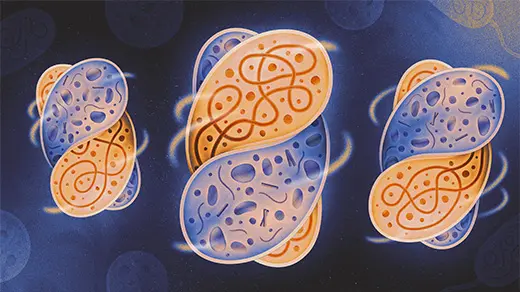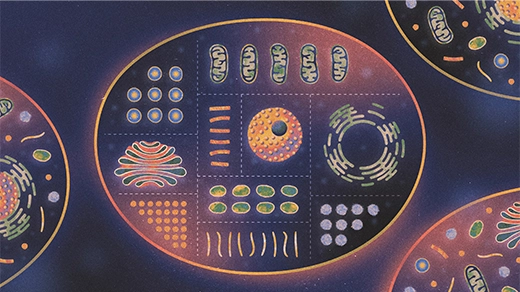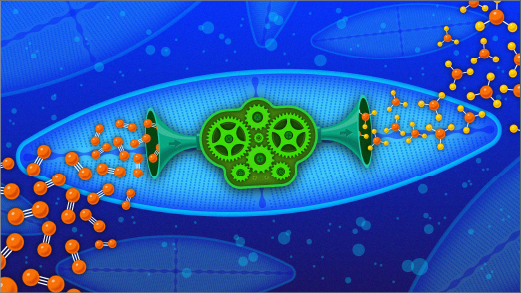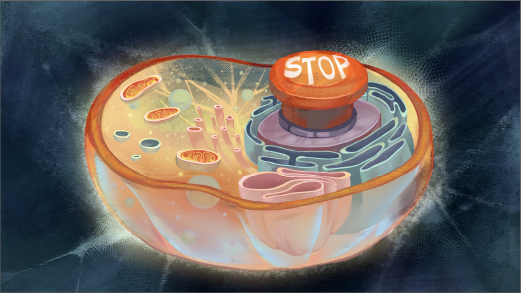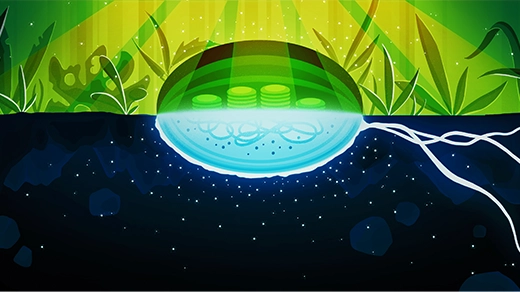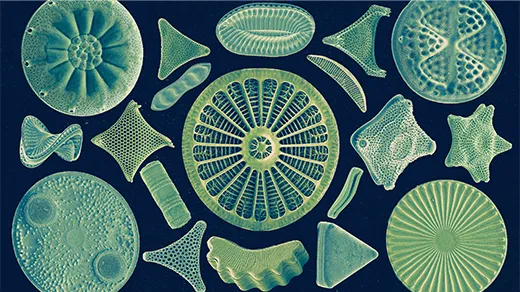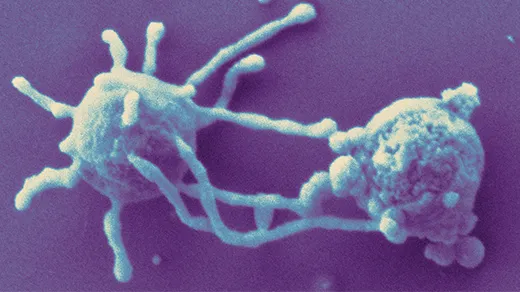What's up in
Microbiology
Latest Articles
Scientists Re-Create the Microbial Dance That Sparked Complex Life
Evolution was fueled by endosymbiosis, cellular alliances in which one microbe makes a permanent home inside another. For the first time, biologists made it happen in the lab.
Meet the Eukaryote, the First Cell to Get Organized
All modern multicellular life — all life that any of us regularly see — is made of cells with a knack for compartmentalization. Recent discoveries are revealing how the first eukaryote got its start.
Tight-Knit Microbes Live Together to Make a Vital Nutrient
At sea, biologists discovered microbial partners that together produce nitrogen, a nutrient essential for life. The pair are in the process of merging into a single organism.
Most Life on Earth Is Dormant, After Pulling an ‘Emergency Brake’
Many microbes and cells are in deep sleep, waiting for the right moment to activate. Biologists discovered a widespread protein that abruptly shuts down a cell’s activity — and turns it back on just as fast.
The Quest for Simple Rules to Build a Microbial Community
Microbiologists are searching for a universal theory of how bacteria form communities based not on their species but on the roles they play.
Underground Cells Make ‘Dark Oxygen’ Without Light
In some deep subterranean aquifers, cells have a chemical trick for making oxygen that could sustain whole underground ecosystems.
In a Fierce Desert, Microbe ‘Crusts’ Show How Life Tamed the Land
Extreme microorganisms carpeting the Atacama Desert in Chile illuminate how life might have first taken hold on Earth’s surface.
Microbes Gained Photosynthesis Superpowers From a ‘Proton Pump’
New research reveals how marine microbes use an extra membrane that once had digestive functions to boost their yield from photosynthesis.
Primitive Asgard Cells Show Life on the Brink of Complexity
As researchers race to cultivate more of the intriguing cells from the deep seafloor, the few cells now growing in labs are giving us our best glimpses of the forerunners of all complex life.
